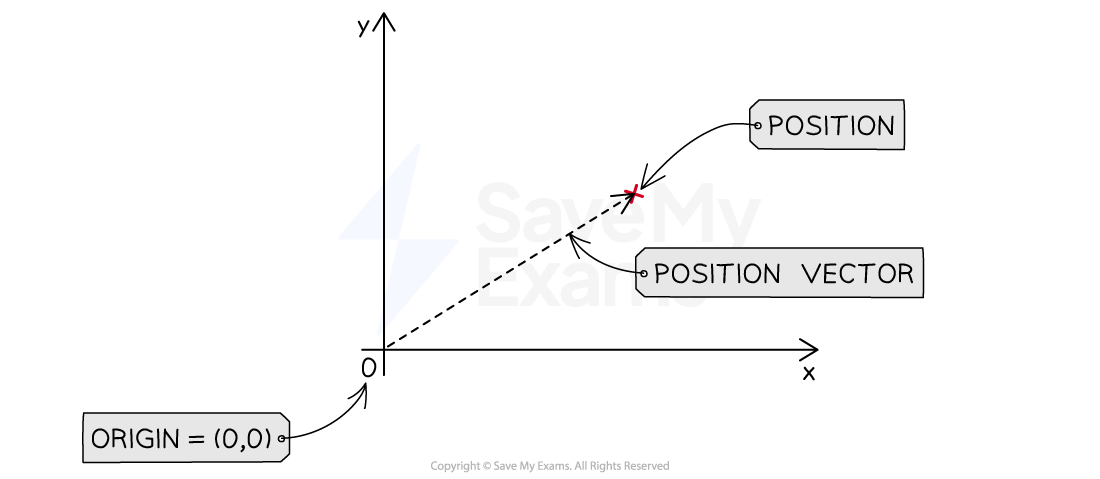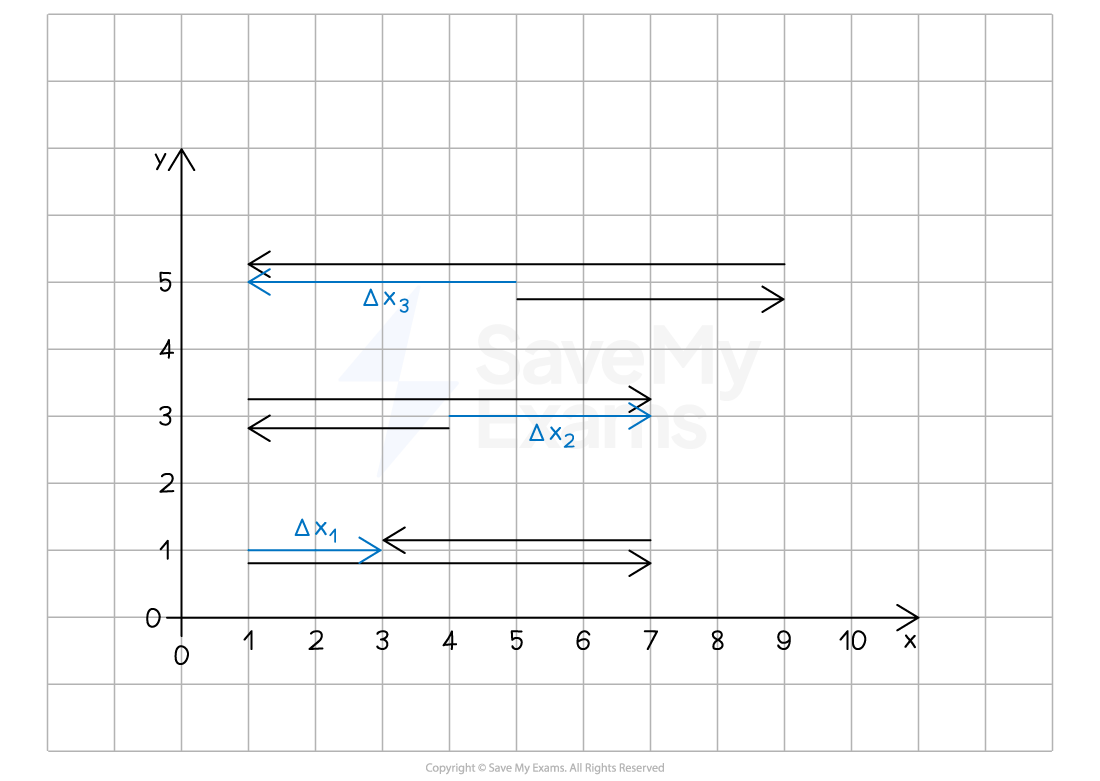Displacement (College Board AP® Physics 1: Algebra-Based) : Study Guide
How to calculate displacement
Defining an object
The term object can be used to describe a wide range of items in physics, from subatomic particles to entire galaxies
When the term object is used to describe something, the assumption is that the following properties are ignored:
size
shape
internal configuration
The object may be treated as:
a point mass
a point charge
Position
Position is defined as:
An object's location in space, relative to a reference point
In math, the position of an object is measured relative to the origin of a coordinate system

In physics, the position of an object,
, is measured relative to a reference point
The reference point could be a coordinate system or another object
For example, point A is located at the coordinate (5, 3)
Or, the car is located at 4 m to the left of the lamp post
The relative nature of an object's position gives it a directional component
This is why position is a vector quantity with both magnitude and direction
Displacement
Displacement is defined as:
The change in an object's position
Displacement describes the difference in position between an object's starting position and its finishing position, regardless of the route taken
Distance is the route traveled; this is covered in detail in the study guide on Scalar and vector quantities
Since displacement describes the movement of an object from its initial position to its final position, displacement is also a vector quantity with both magnitude and direction
Displacement is described algebraically using the following equation:
Where:
= displacement, measured in
= final position, measured in
= initial position, measured in
Notice that the
notation literally means a change in position
Worked Example
On an ,
coordinate system, Object 1 moves from (1, 1) to (7, 1) to (3, 1). Object 2 moves from (4, 3) to (1, 3) to (7, 3) and Object 3 moves from (5, 5) to (9, 5) to (1, 5).
Which of the following statements is true?
A:
B:
C:
D:
The correct answer is D
Answer:
Step 1: Analyze the scenario
The
coordinates for each object are constant, so the objects are moving in one dimension only
Object 1 moves in the positive direction from (1, 1) to (7, 1), then it moves in the negative direction from (7, 1) to (3, 1)
Object 2 moves in the negative direction from (4, 3) to (1, 3), then it moves in the positive direction from (1, 3) to (7, 3)
Object 3 moves in the positive direction from (5, 5) to (9, 5), then it moves in the negative direction from (9, 5) to (1, 5)
Recall that displacement is the change in an object's position from its initial position to its final position
Step 2: Sketch a diagram of the situation or calculate the displacement algebraically

On the diagram:
The lower black arrows show the movement of each object from its initial position to its intermediate position
The upper black arrows show the movement of each object from its intermediate position to its final position
The blue arrows show the net movement of each object from its initial position to its final position; this is the object's displacement
Calculating algebraically using the equation
Object 1
Initial position on
-axis,
Final position on
-axis,
Object 2
Initial position on
-axis,
Final position on
-axis,
Object 3
Initial position on
-axis,
Final position on
-axis,
Step 3: Review the answer options
The answer options describe the relative values for the magnitude of the displacement,
so the direction of the displacement can be ignored
The object with the greatest magnitude of displacement is Object 3
The object with the smallest magnitude of displacement is Object 1
Therefore:
This is answer option D
Examiner Tips and Tricks
Displacement is a straight line from the object's starting position, , to its final position,
, therefore, the vector arrow of displacement will always lie along a single plane. So, when displacement is expressed in terms of the object's starting position, the direction is already stated in the
term. Hence, vector notation is not required if the
term is present.

You've read 0 of your 5 free study guides this week
Sign up now. It’s free!
Did this page help you?

